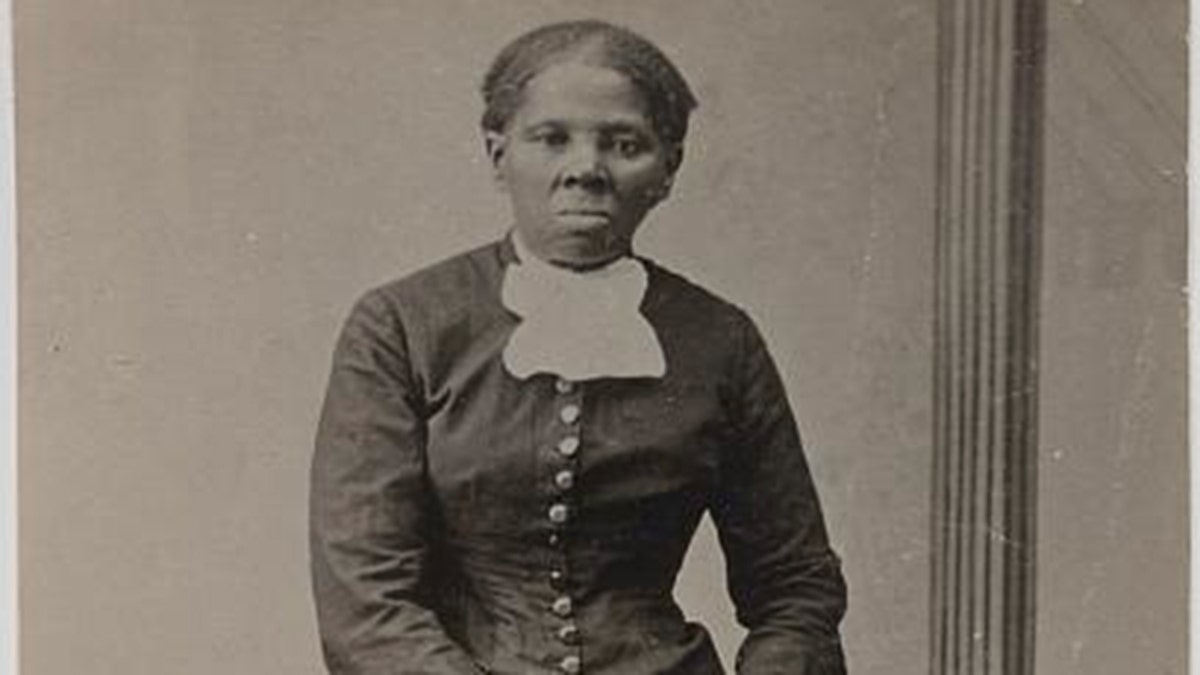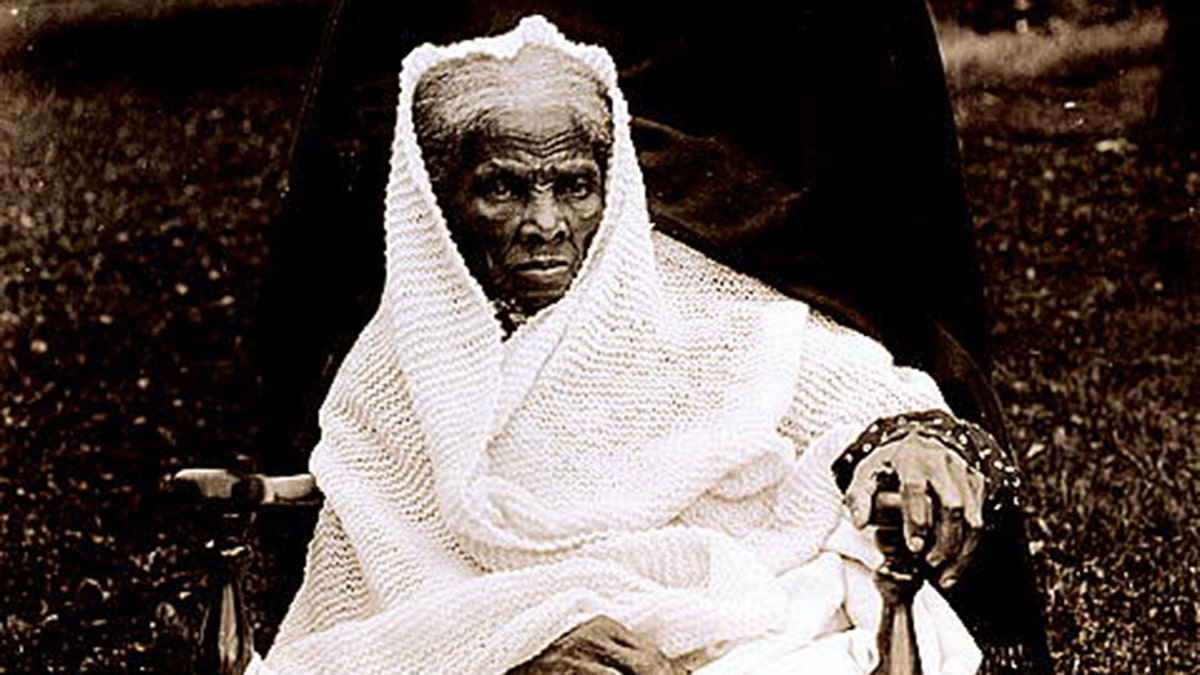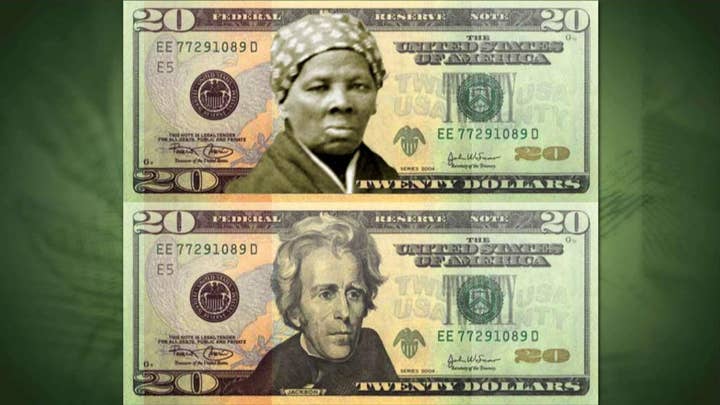Direct descendant of Thomas Jefferson calls for replacing his Washington memorial with Harriet Tubman
Lucian K. Truscott IV writes in The New York Times that replacing the D.C. monument would be telling the real history of America; reaction and analysis on 'Outnumbered.'
At present, the nation and the world are taking more notice of Harriet Tubman’s American heritage as a hero of liberty.
These days her life is celebrated across America – such as the Harriet Tubman National Historical Park in New York, the Harriet Tubman Underground Railroad Visitor Center in Maryland, and the Harriet Tubman Underground Railroad Byway, a self-guided driving tour with 36 sites and a route of 125 miles.
Her accomplishments often have been entombed in middle school history books, however she was so much more than a symbol for a resistance movement against the brutal injustices of America’s dehumanizing enslavement of Black Americans: She was a real person who lived a full life for the betterment of society and humanity.

Harriet was her mother’s first name, and Tubman was her husband’s last name. Her original name was Araminta Ross, and she was born into slavery in 1820 or 1821 on the eastern shore of Maryland. (Library of Congress)
Tubman, who did not read or write, escaped from slavery in antebellum Maryland to become a leading abolitionist. She helped scores of other slaves escape the South by guiding them north on the Underground Railroad, an informal network that helped escaping slaves evade capture and reach free states.
US TREASURY DEPARTMENT 'RESUMING' EFFORTS TO PUT HARRIET TUBMAN ON $20 BILL
LIFE
Harriet was her mother’s first name, and Tubman was her husband’s last name.
Her original name was Araminta Ross, and she was born into slavery in 1820 or 1821 on the eastern shore of Maryland.
She was known for her strong sense of family, community and religious faith as well as her height – just 5 feet tall.
Tubman’s first known act of defiance against slavery: The icon for freedom refused a brutal slave owner’s orders to help him detain another slave near the Bucktown Village Store in Maryland. When the other slave ran, the owner grabbed a 2-pound weight and threw it at him, hitting Tubman on the head and causing an injury that would trouble her for the rest of her life.
In 1849, she fled to Philadelphia, after which a reward for her recapture was posted. But Tubman returned to the South to lead other slaves to freedom, conducting more than 70 people through the Underground Railroad network of abolitionists.
According to the National Park Service in an article about Tubman: "During public and private meetings during 1858 and 1859, Tubman repeatedly told people that she had rescued 50 to 60 people in eight or nine trips. This was before her very last mission, in December 1860, when she brought away seven people."

Harriet Tubman helped scores of other slaves escape the South by guiding them north on the Underground Railroad, an informal network that helped escaping slaves evade capture and reach free states. (Library of Congress)
Her missions would go so far north that she would lead slaves across the suspension bridge of the Niagara River to freedom in Canada.
She worked as a scout, spy and nurse for the Union Army during the Civil War. Historians say she was the only woman in the Civil War to help plan and lead a military operation.
Tubman came to the South Carolina city of Beaufort in 1862 to help the thousands of slaves freed when the Union occupied the city. The next year, she helped lead 150 Black soldiers on a gunboat raid in South Carolina up the Combahee River. With Col. James Montgomery, she rescued more than 700 slaves.
Tubman also became a noted suffragette before her death. She died on March 10, 1913, at a home for the elderly she founded in Auburn, N.Y.
TREASURY DEPARTMENT WATCHDOG TO REVIEW DELAY IN HARRIET TUBMAN REDESIGN OF $20 BILL

Only recently did a picture of a more youthful Harriet Tubman surface. In 2017, the Library of Congress and the Smithsonian Institution’s new National Museum of American History and Culture in Washington acquired the rare photograph. (Library of Congress)
LEGACY IN CULTURE
The best-known appearance of Tubman, who was in her late 20s when she escaped from slavery and began going back South to help others to freedom, has largely been of her as an older woman.
Only recently did a picture of a more youthful Tubman surface.
In 2017, the Library of Congress and the Smithsonian Institution’s new National Museum of African American History and Culture in Washington acquired a rare photograph of Tubman in her late 40s from the 1860s.
"When we think of Harriet, we kind of don’t see her womanhood. That’s partly because in the pictures we have of her, she’s an older woman," said Kasi Lemmons, the filmmaker who directed the first Tubman biopic in 2019. "There’s a picture found fairly recently of Harriet as a young woman, and that was my inspiration. There was this very small, young woman who managed to do incredible things."
Lemmons believes the production was guided spiritually by Tubman.
"I didn’t think in those terms. I really thought about this as a task I took very solemnly of bringing Harriet to life so that young girls could see this young woman heroine, and that the world could see her as this fierce, strong, feminine presence that she was," said Lemmons. "You want to remind people of what can be and what has been done through sheer force of will and courage."
HARRIET TUBMAN $20 BILL REDESIGN POSTPONED

Harriet Tubman was known in her day as "Moses." (Library of Congress)
LEGACY IN SOCIETY
Plans to put Tubman, the woman known in her day as "Moses," on the $20 bill – to coincide with the 100th anniversary of passage of the 19th Amendment giving women the right to vote – have received prominent attention, stirring debate about the representation of American historic figures on the nation’s currency and the lack of multiculturalism and inclusion.
The Biden administration in late January said the Treasury Department is taking steps to resume efforts to put the 19th-century abolitionist leader on the $20 bill.
Obama administration Treasury Secretary Jack Lew had selected Tubman to replace Andrew Jackson, the nation’s seventh president, on the $20 bill.
But Tubman’s fate had been in doubt since the 2016 presidential campaign based on critical comments by then-candidate Donald Trump, who branded the move "pure political correctness."
CLICK HERE TO GET THE FOX NEWS APP
Trump administration Treasury Secretary Steven Mnuchin did not move forward with the decision by the Obama administration.
"It is important that our .... money reflect the history and diversity of our country and Harriet Tubman’s image gracing the new $20 note would certainly reflect that," White House press secretary Jen Psaki said.







